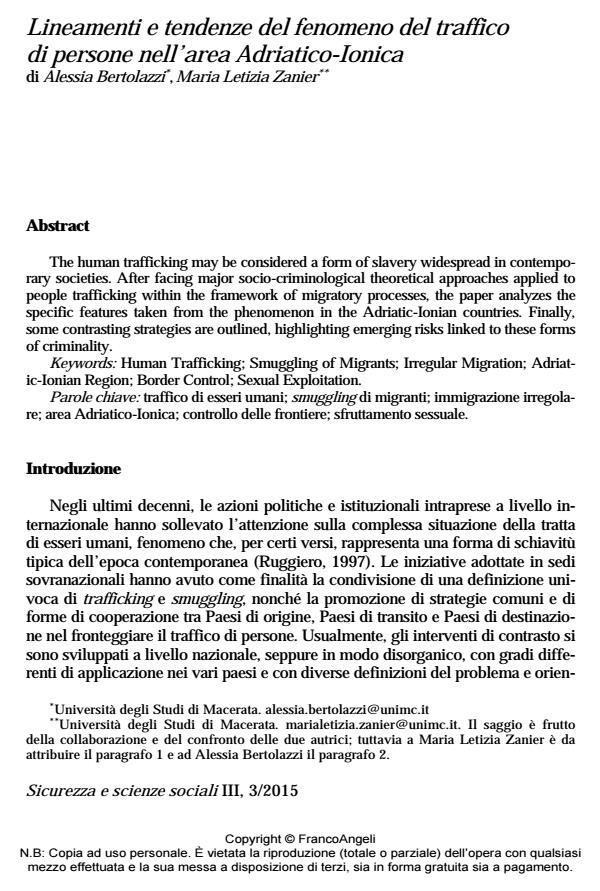Lineamenti e tendenze del fenomeno del traffico di persone nell’area Adriatico-Ionica
Titolo Rivista SICUREZZA E SCIENZE SOCIALI
Autori/Curatori Alessia Bertolazzi, Maria Letizia Zanier
Anno di pubblicazione 2016 Fascicolo 2015/3
Lingua Italiano Numero pagine 13 P. 48-60 Dimensione file 69 KB
DOI 10.3280/SISS2015-003005
Il DOI è il codice a barre della proprietà intellettuale: per saperne di più
clicca qui
Qui sotto puoi vedere in anteprima la prima pagina di questo articolo.
Se questo articolo ti interessa, lo puoi acquistare (e scaricare in formato pdf) seguendo le facili indicazioni per acquistare il download credit. Acquista Download Credits per scaricare questo Articolo in formato PDF

FrancoAngeli è membro della Publishers International Linking Association, Inc (PILA)associazione indipendente e non profit per facilitare (attraverso i servizi tecnologici implementati da CrossRef.org) l’accesso degli studiosi ai contenuti digitali nelle pubblicazioni professionali e scientifiche
The human trafficking may be considered a form of slavery widespread in contemporary societies. After facing major socio-criminological theoretical approaches applied to people trafficking within the framework of migratory processes, the paper analyzes the specific features taken from the phenomenon in the Adriatic-Ionian countries. Finally, some contrasting strategies are outlined, highlighting emerging risks linked to these forms of criminality.
Parole chiave:Traffico di esseri umani; smuggling di migranti; immigrazione irregolare; area Adriatico-Ionica; controllo delle frontiere; sfruttamento sessuale
Alessia Bertolazzi, Maria Letizia Zanier, Lineamenti e tendenze del fenomeno del traffico di persone nell’area Adriatico-Ionica in "SICUREZZA E SCIENZE SOCIALI" 3/2015, pp 48-60, DOI: 10.3280/SISS2015-003005